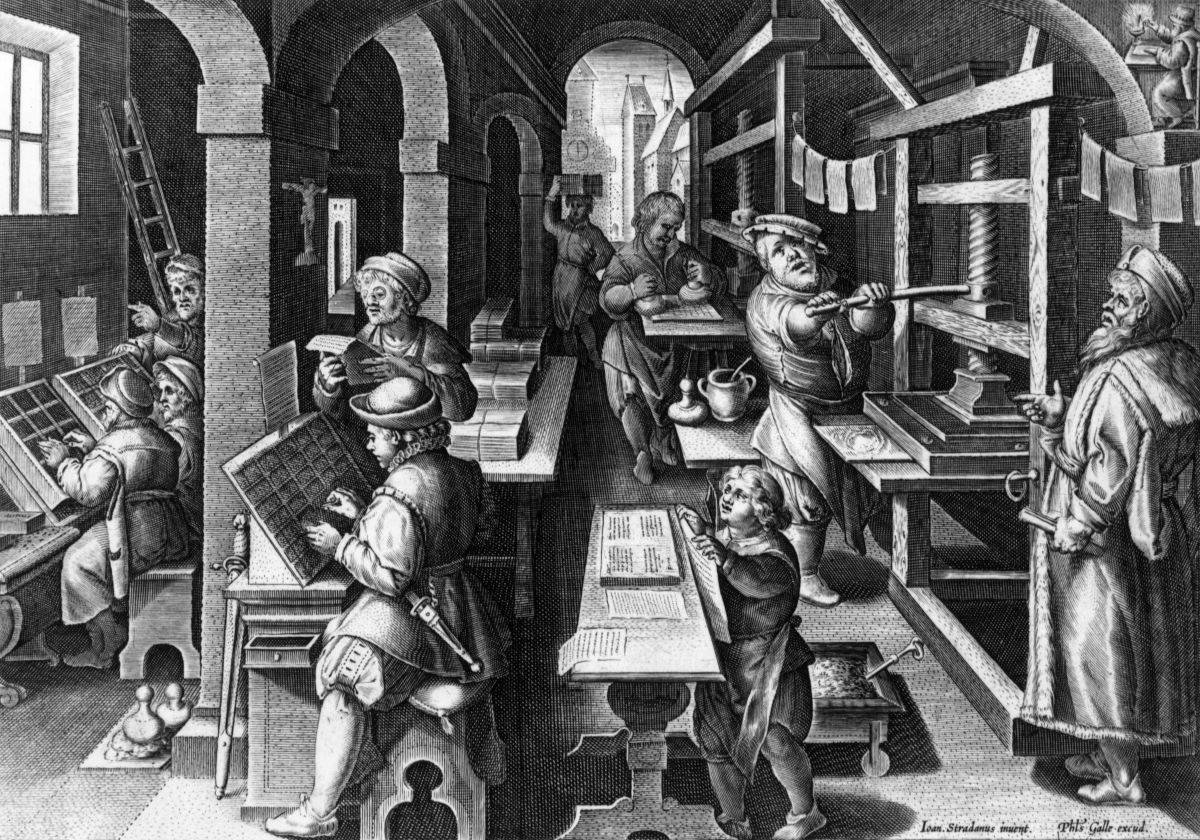
We work with a lot of clients in the printing industry, so we were fascinated when we found out about the exciting history of the printing press. Seriously.
Movable type
It all started with Johannes Gutenberg in 1440, of course. Up till that time, printing a page meant engraving the whole page in mirror image onto a block of something (usually wood), inking it up, and laying the paper onto it. This was faster than copying a page out by hand many times, but not exactly fast. Gutenberg came up with a machine that used movable metal type. Letters could be arranged in a block, used to print a page, and then rearranged for another page.
Movable type, it must be said, wasn’t Gutenberg’s idea. A guy named Bi Sheng actually came up with movable type in China around 1040. His type was made from clay rather than metal, so it was less durable. He also had no machine to power his type, but it was a step in the right direction. It probably never took off primarily because Chinese doesn’t use an alphabet. Movable type is therefore less of a time saver for printing in Chinese.
In European languages, it was huge.
Linotype
For about 15 years Gutenberg worked on printing various things: a poem, a calendar, stuff like that. Then he got around to printing his first book: the Bible. He managed a couple hundred copies, but then went bankrupt. In spite of Gutenberg’s personal troubles, his process was a big hit. By 1500, there were 15 million printed books in existence in Europe.
Gutenberg’s press was based on other types of presses in use at the time, and other people came up with improvement in the machine, such as the rotary press in 1819 and the electric motor for a printing press in 1837, but the general process was pretty much the same.
The next major improvement in printing came along in 1886, sticking with the pattern of having a new idea every four centuries. Ottmar Mergenthaler came up with the linotype composing machine in that year. Instead of pulling individual metal letters from drawers and setting them with a stick, printers could now set a whole line of type at one time, from a keyboard. The molds could be reused. This was much faster, so fewer people were needed, and newspapers got much longer. Wikipedia says that newspaper were never more than 8 pages long before linotype was invented, and that would hardly get you through Sunday breakfast and coffee.
Offset printing
Offset printing began in the early 20th century, and presses could create thousands of impressions in an hour by the 1930s, allowing many cool scenes in movies where the newspaper presses whirr impressively (no pun intended) and then a newspaper spins onto the screen with the amazing headline that gets the film on to the next scene.
Modern printing
No more waiting for centuries for innovations, either. The use of light for copying made its appearance in 1938, and the first practical phototypesetting machine showed up in 1949. Computers joined the mix in the second half of the 20th century, and motion control came into the picture when Indramat started up in 1958. Printing presses were an obvious application for modern motion control. By the 1970s, computers were fully integrated into the printing process, from the text to the press.
Rexroth acquired Indramat to serve as its electrical drive division at the end of the 20th century.
Rexroth focused its electric drive and control division on smart drives and powerful motors perfect for printing presses. Newspapers are still printed with printing presses, even though most people now access news online. The area where printing presses are most used now is in packaging. The printing press is not much like Gutenberg’s original any more, but Rexroth still builds the best servo motors for printing and packaging applications.
So now you know.

[…] work with lots of printing presses, so I guess it’s natural that I would be interested in the history of printing. It’s even more natural that I would be interested in the future of […]